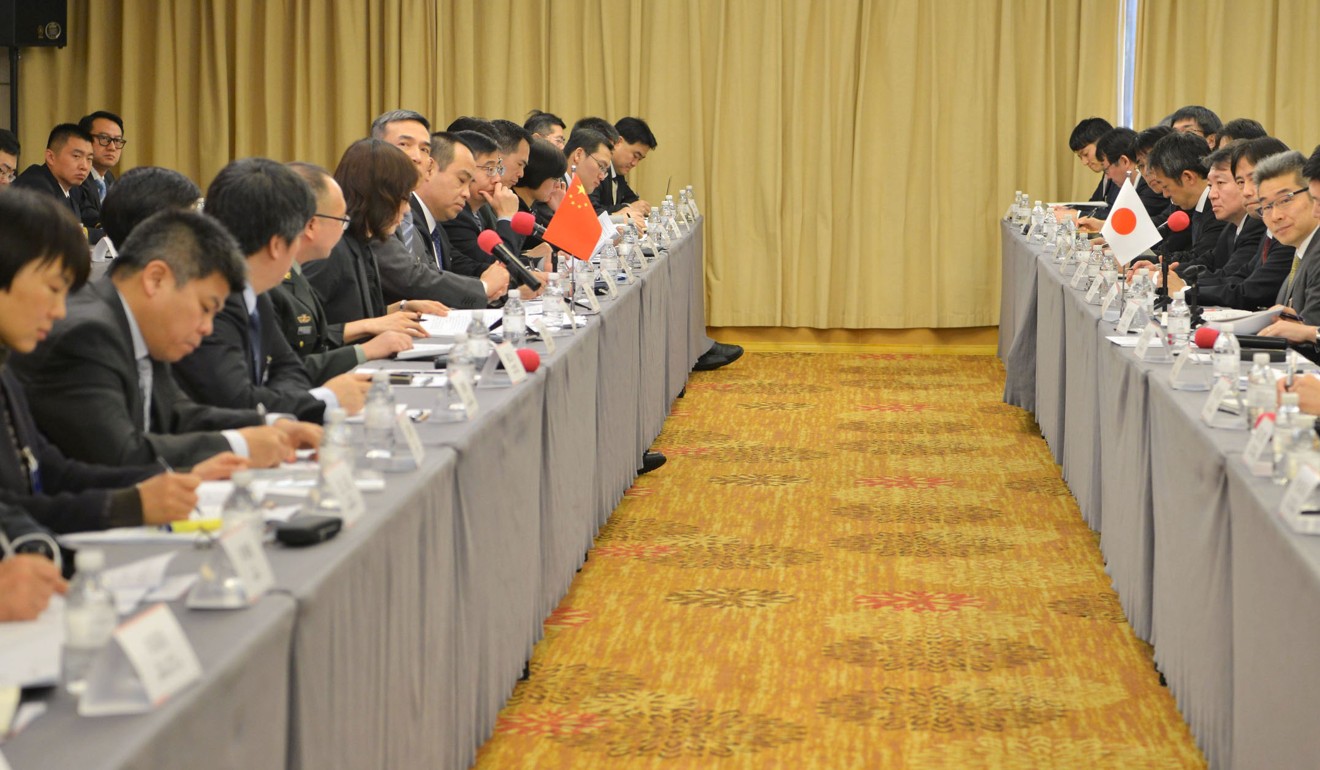
China, Japan close to setting up hotline to avoid sea, air clashes: sources
Hopes of an agreement come amid long-standing tensions between the two nations over disputed islands in the East China Sea
Japan and China have largely agreed on how to implement a maritime and air communication mechanism aimed at averting unintended clashes in and above the East China Sea, sources said.
The move towards an agreement comes despite strained relations between the two sides over the disputed Diaoyu Islands, known in Japan as the Senkaku, in the East China Sea.
The mechanism – a form of hotline between defence officials of the two countries – is expected to be put into practice in the near future after a decade of negotiations.
The deal was struck during a two-day meeting of senior officials in Shanghai, said the sources, who spoke on condition of anonymity. It is yet another sign of the two nations’ ties improving at a faster pace after Chinese President Xi Jinping consolidated power through his ruling party’s congress in October.

The progress has also been made after Japanese Prime Minister Shinzo Abe and Xi agreed last month on the sidelines of a regional economic summit in Vietnam that Asia’s two biggest economies would make a “new start” in their relationship.
Diplomats and defence officials from the two countries were engaged in negotiations this autumn and both sides agreed during the Shanghai meeting not to specify the geographical scope of the mechanism, according to the sources.
One of the major stumbling blocks in their efforts to establish the mechanism was how to treat territorial waters and airspace around the Diaoyu Islands.
Japan has demanded that its territorial waters and airspace not fall within the mechanism’s scope, concerned that China could take advantage of the agreement to strengthen its claim to the islands by interpreting the new framework as giving it the legitimate right to approach them.
In working towards the implementation of the maritime and aerial communication mechanism, senior Japanese and Chinese officials are believed to have agreed that the system will not undermine the legal positions of each country.
Japan and China still need to work out the details of the mechanism before reaching an official agreement. A plan to create a maritime and aerial hotline was first agreed between the two countries in 2007, but for years the negotiations did not go smoothly as disagreements over the islands and wartime issues often stymied relations between the world’s second- and third-largest economies.
After the Japanese government bought some of the islands from a private Japanese owner in 2012 to bring them under state control, China continued to regularly send its ships around the Diaoyu.
Chinese and Japanese ships and aircraft have been playing a dangerous game of cat and mouse around the islands, causing simmering worries in the region that accidents or miscalculations could spark a wider conflict.

